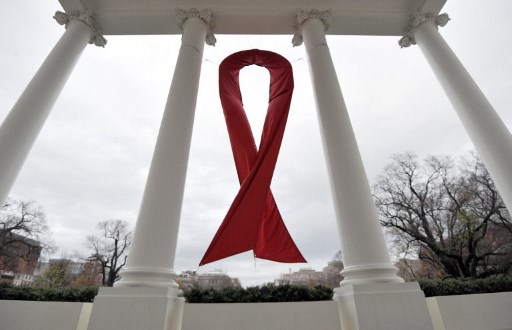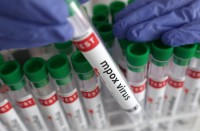
by Marlowe HOOD and Patrick GALEY
Agence France Presse
PARIS, France (AFP) — A second person is in sustained remission from HIV-1, the virus that causes AIDS, after ceasing treatment and is likely cured, researchers said Tuesday in what was hailed as proof that the condition could one day be cured.
Ten years after the first confirmed case of an HIV-infected person being rid of the deadly disease, a man known only as the “London patient” has shown no sign of the virus for nearly 19 months, doctors reported in the journal Nature.
Both had received bone marrow transplants to treat blood cancers, receiving stem cells from donors with genetic mutation present in less than one percent of Europeans that prevents HIV from taking hold.
“It is a landmark. After 10 years of not being able to replicate (the first case), people were wondering if this was a fluke,” said lead author Ravindra Gupta, a professor at the University of Cambridge.
“I think it is important to reaffirm that this is real and it can be done,” Gupta told AFP.
Millions of people infected with HIV around the globe keep the disease in check with so-called antiretroviral therapy (ARV), but the treatment does not rid patients of the virus.
Close to 37 million people are living with HIV worldwide, but only 59 percent are receiving ARV. Nearly one million people die every year from HIV-related causes.
A new drug-resistant form of HIV is also a growing concern.
Gupta and his team emphasised that bone marrow transplant — a dangerous and painful procedure — is not a viable option for HIV treatment.
But a second instance of remission and likely cure following such a transplant will help scientists narrow the range of treatment strategies.
– ‘HIV is curable’ –
“The second case strengthens the idea that a cure is feasible,” Sharon Lewin, director of the Peter Doherty Institute for Infection and Immunity and the University of Melbourne, told AFP.
“We can try to tease out which part of the transplant might have made a difference here, and allowed this man to stop his anti-viral drugs.”
The International AIDS Society said in a statement Tuesday that results from the second patient “reaffirm our belief that there exists a proof of concept that HIV is curable”.
Mark Dybul, co-chair of the Towards an HIV Cure initiative, said the London case “is as important as it is exciting”.
Both patients received stem cell transplants from donors carrying a genetic mutation that prevents expression of an HIV receptor, known as CCR5.
The study describes an anonymous male patient in Britain who was diagnosed with HIV infection in 2003 and had been on antiretroviral therapy since 2012.
Later that year, he was diagnosed with advanced Hodgkin’s Lymphoma, a deadly cancer.
He underwent a so-called haematopoietic stem cell transplant in 2016 from a donor with two copies of a CCR5 gene variant, which is resistant to most HIV-1 virus strains.
“CCR5 is something essential for the virus to complete its life-cycle and we can’t knock out many other things without causing harm to the patient,” said Gupta.
“We know that CCR5 can be knocked out without any serious consequences because people are walking around without that gene.”
CCR5 was the target in the genome of the controversial gene-edited twins born last year in China, whose father is HIV-positive.
– New communities –
After the bone marrow transplant, the London patient remained on ARV for 16 months, at which point treatment was stopped.
Regular testing has confirmed that the patient’s viral load remained undetectable since then.
Timothy Brown, the first sustained remission survivor known as the “Berlin patient”, was given two transplants and underwent total body irradiation to treat leukaemia, while the British patient received just one transplant and less intensive chemotherapy.
“I did not want to be the only person in the world cured of HIV,” Brown wrote in a medical journal in 2015, explaining why he decided to reveal his identity.
Gupta said he hoped to expand research on the stem-cell transplant technique to focus on communities in Africa, where the HIV-beating mutation does not naturally occur.
“Expanding remission to populations that are affected disproportionately is quite important,” he told AFP.
The research team for the London patient will present their findings at the annual Conference on Retroviruses and Opportunistic Infections (CROI) in Seattle, Washington, later on Tuesday.
© Agence France-Presse







